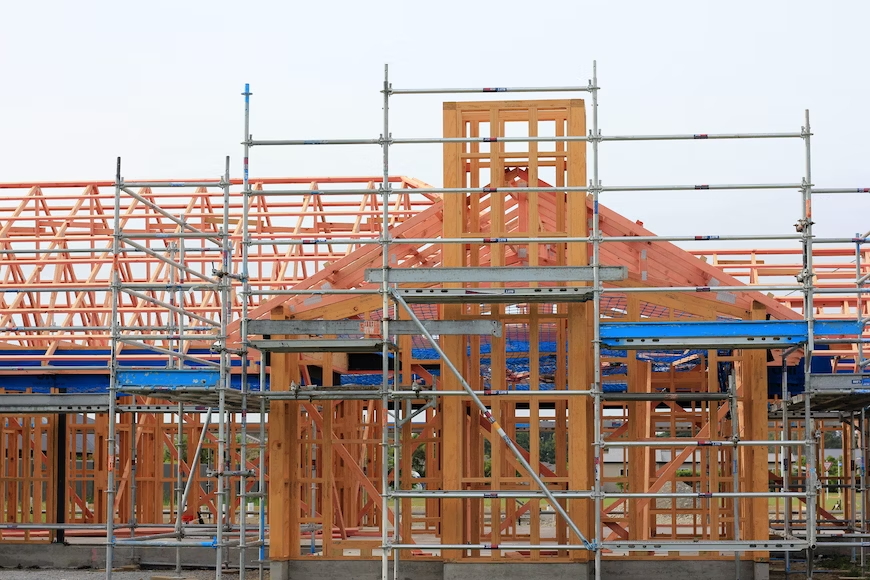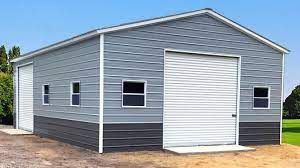
Photo by Sandy Millar on Unsplash
If you are always involved in home construction projects, think of ways to make the entire process as seamless as possible for both your team and your clients. To help you with that, here are some essential tips to make that possible.
1. Establish goals and guidelines
Whether it’s a complete home construction ability or a home renovation project, having clear guidelines and goals will be a huge help.
Setting specific goals is there to ensure that the homeowner’s desires are clear to the construction team. It’s about the coming together of the expectations of the construction team and the homeowner so that everyone is on the same page.
You wouldn’t want to encounter hiccups in the construction process because the client constantly changes how they want the house to look. That’s why communicating with them during the planning and goal-setting stage is crucial.
On the other hand, guidelines are something that construction teams develop within their processes and groups. These guidelines ensure that you and your team are consistent with the standards, procedures, and expectations you need to follow with the construction.
As you get more home construction projects, you better identify the parts of the guideline that need clarification and which features you should remove altogether. So, don’t be afraid of tweaking it as you go. Ensure you tell all your team members the guideline changes whenever they occur.
2. Set a realistic budget
Budgeting will be a critical aspect of anything that involves significant purchases or expenses, regardless of what it may be. The same applies to home construction.
A clear and realistic budget will benefit the homeowner and the construction team. By establishing a budget that accurately reflects the costs involved, homeowners can avoid unexpected financial strains and setbacks during construction.
The estimation by the construction team should be as accurate as possible to help homeowners understand what expenses to expect. Construction costs should take into account the following:
- materials
- labor
- permits
- unforeseen circumstances
A realistic budget should consider these and have a financial buffer in case things go awry.
Moreover, setting a realistic budget helps homeowners make informed decisions about their priorities and preferences. It allows them to determine what aspects of their dream home are feasible within their financial means and what adjustments may be necessary.
Budgeting is also why you needed a goal-setting part in the first place. When the homeowner has a clear goal, the construction team can get a more accurate cost estimate. Therefore, the client can see if they might have to cut back on some of their desires or if they could increase their construction budget.
Once they have a realistic budget, the construction team can start working, and the homeowner won’t have to worry as much about overspending.
3. Hire the right people
If you’re building a construction team, then make sure to hire the right people. There will be instances where hiring personality over experience is better, and expertise and experience are more crucial. Ideally, you should have both.
When you hire the right people, it will be your job to keep them with you by building a solid community in your team. Otherwise, you may lose the right people after you hire them.
4. Use the right software
A recent development in home construction is incorporating software in the construction process. Since there are many out there, it’s important to discern which tools are most important and worth your time and money.
For example, an engineer construction software is helpful for your engineers so they can operate faster and more efficiently and plan and communicate with the team. If that’s where you think software usage will make the most sense, then apply it there.
The key here is to check again and again whether your overall construction efficiency improves with the adoption of the software. Also, ensure you’ve given the software enough time to marinate and integrate into your work processes. That way, you get a clear idea of how it’s working for your team.
5. Practice good communication
A construction project, even one that you’ve done again and again, has a lot of parts involved in it, so there’s always going to be some hiccups down the road. One of them that is entirely avoidable is poor communication.
You have to practice good communication in every construction project from multiple angles. It could be communication between your team members, between you and your team members, you and clients, your team with your clients, you with suppliers, etc.
When you have good communication, your clients trust you, and you build long-term business relationships in your line of work.
6. Have realistic expectations
Consider every facet of the construction process when building up expectations for yourself, your team, and your clients. That way, you avoid disappointing yourself and the involved stakeholders.
That’s why it’s so integral to the home construction process that you have a clear and open line of communication with your client. The last thing you want is to leave them away with a home they don’t like, so always talk to them and make it clear what they’ll end up with based on everything they’ve told you about their home.
7. Follow safety protocols
It should go without saying, but don’t cut any corners on your construction site, especially regarding safety and security. Even if it goes well at first, it’s not always going to be the case, so communicate the gravity of the importance of following safety protocols to your team and a client who may want to check out the construction site occasionally.
8. Monitor progress and quality
Even if you’re the head honcho or the construction project manager who’s not as involved with the on-site construction process, you should still know about the progress. It would be best if you had someone monitoring progress and quality somehow.
Taking the time to inspect the work whenever possible will speed things up and ensure that you don’t encounter costly and potentially dangerous mistakes in the future.
Conclusion
These tips will ensure a smoother home construction process that you and your construction team will appreciate and one that your clients will also enjoy. Therefore, if you want to improve your overall approach to home construction projects, keep these tips in mind so that you can have an optimal construction process to rely on for every project.
Author bio:
Kate Manning is passionate about home improvement and interior decoration. When not at work, you’ll see her running around the neighborhood to prepare for any upcoming local marathon.






